Mayan Civilization
The Maya! You know 'em. Famous for their pyramids, a wild calendar, and that whole "mysterious collapse" thing. But the Mayan civilization was so much more than that, let's dig in. Before the Maya, the Olmec civilization had already laid down some of the earliest roots of Mesoamerican culture, things like pyramids, calendars, and symbolic art that the Maya would later refine. The Maya were one of several powerful cultures that shaped Mesoamerican civilizations, each adding their own genius to a shared cultural world.
The World of the Mayan Civilization
The Mayan civilization covered a huge area with a wild mix of landscapes. It stretched across southeastern Mexico, Guatemala, Belize, and parts of Honduras and El Salvador. This geography shaped everything, from their food to their fights.
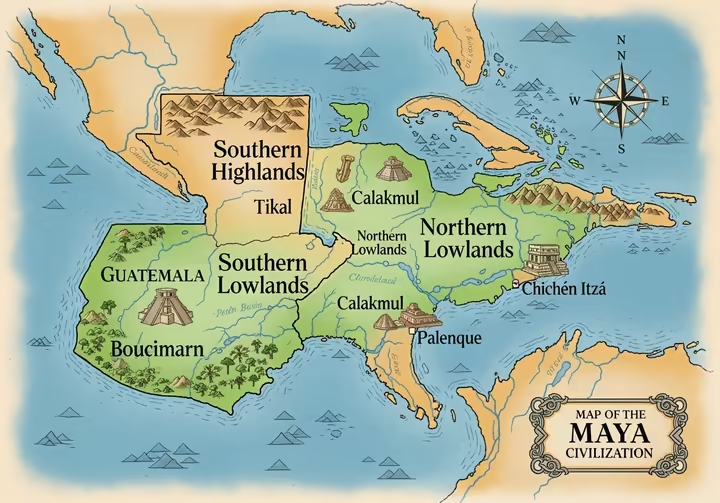
You can split their world into three main zones. In the south are the rugged Guatemalan highlands, where rich volcanic soil was great for farming. This area also had precious stuff like obsidian (for tools) and jade (their most valuable treasure).
To the north were the southern lowlands, a huge, dense rainforest in Guatemala's Petén Basin. This hot, humid jungle became the heartland of the Classic Mayan civilization. It's where legendary cities like Tikal grew.
Farther north, the Yucatán Peninsula was flat, dry, and had almost no surface water. Life there depended on natural sinkholes called cenotes . These wells were also seen as sacred gateways to the underworld.
Timeline of the Mayan Civilization
The history of the Mayan civilization spans about 3,000 years, usually broken into three big chunks. Think of their history less like a straight line and more like a cycle of booms and busts.
Preclassic Times (c. 2000 BCE – 250 CE)
This is where it all started, with small farming villages growing into the first cities. By 400 BCE, huge cities like El Mirador were popping up in the jungle, with massive pyramids. This is also when the Mayan civilization cooked up big ideas like kings, writing, and their famous calendar.
The Classic Period (c. 250 CE – 900 CE)
This was the golden age, especially in the southern lowlands. They carved stone monuments, or stelae , that told the histories of their divine kings. The jungle was home to around 40 city-states, including big players like Tikal and Palenque, a time of amazing art and science for the Mayan civilization.
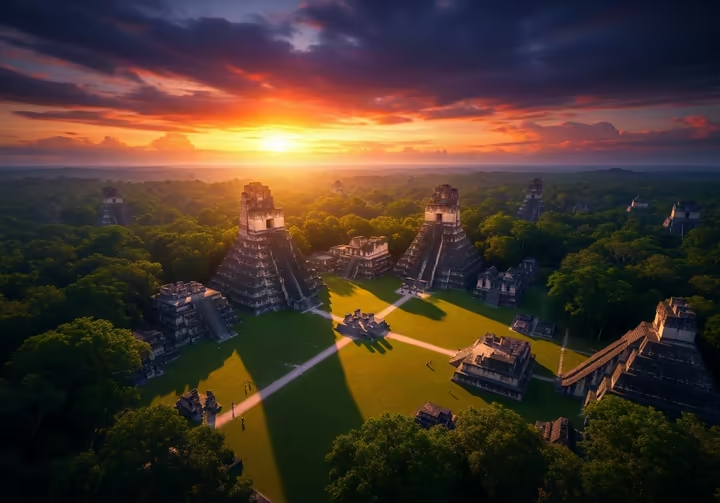
The Postclassic Period (c. 900 CE – 1524 CE)
This era kicked off when the great southern cities were abandoned. People moved north to the Yucatán and the Guatemalan highlands. It was less a collapse and more a transformation, with new cities like Chichén Itzá taking over.
Mayan Civilization: Society and Rulers
The Mayan civilization wasn't a single "empire." Instead, their world was a patchwork of independent city-states (think Tikal or Palenque), each with its own king. These cities were always fighting, making deals, or marrying into each other's royal families.
At the top of each city was the k'uhul ajaw , or “holy lord.” He was the political leader and the kingdom’s direct line to the gods. He led warriors in battle, built temples, and performed sacred rituals to keep the universe running.
The Social Pyramid
Mayan society was strictly layered. In the city center, stone temples and palaces housed the elite. The farther you lived from the center, the lower your social rank.
Below the king were the nobles ( almehenob ), a class of priests, scribes, and top warriors. A middle class of artists and merchants kept the city running. The commoners, who were 90% of the population, supported everyone else as farmers and builders.
At the very bottom were slaves ( ppencatob ), mostly prisoners of war, criminals, or people in debt. They did the hardest work and were often sacrificed.
Ritual Warfare
War was a constant part of Mayan life. But it was often about capturing high-ranking enemies, especially kings. Capturing a rival king to humiliate and sacrifice him later was the ultimate power move.
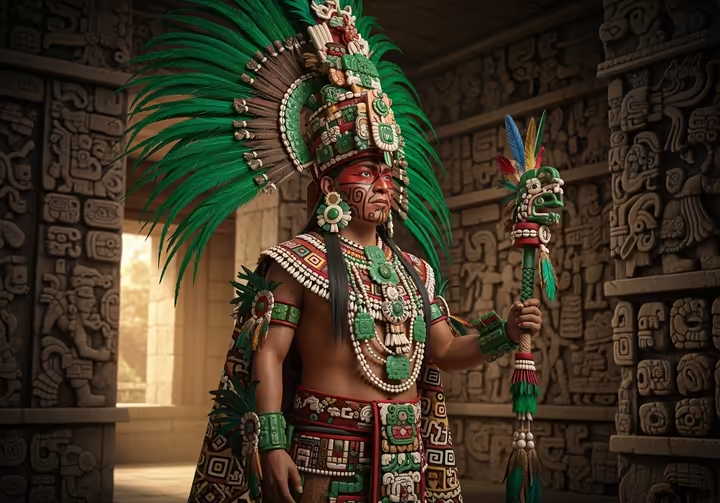
Religion in the Mayan Civilization
For the Maya, everything was sacred. Every object, from a rock to a star, had a spiritual life force called k'uh . Religion wasn't separate from daily life, it was part of everything in the Mayan civilization.
The Shape of the Universe
The Maya saw the cosmos in three parts: the heavens, the middle world, and an underworld called Xibalba (“place of fright”). They believed the earth was a giant turtle floating in the sea. A giant sacred ceiba tree, the World Tree, connected all three realms.
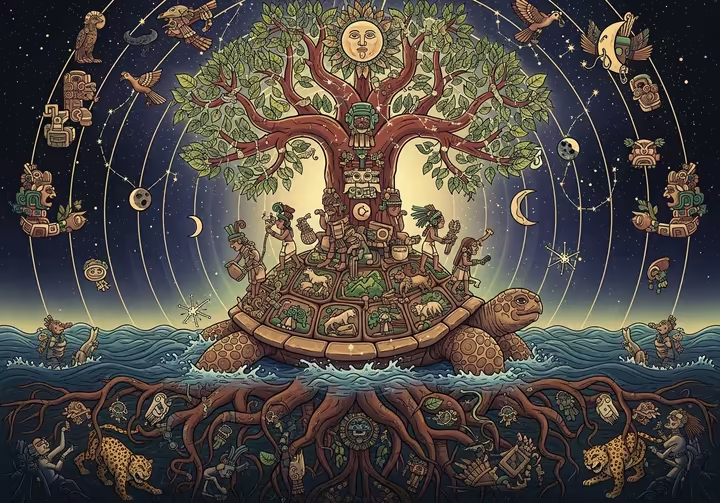
The world was also split into four directions, each with its own color. Places like caves, mountains, and cenotes were seen as portals to the supernatural world.
The Gods
The Maya had a lot of gods, maybe 250 of them. Important ones included Itzamná, the creator god, Chaac, the rain god, and K'inich Ahau, the sun god.
Their sacred book, the Popol Vuh , tells how the gods made humans from maize dough, linking the Maya people to their most important crop. The book also tells the awesome story of the Hero Twins who beat the lords of the underworld in a ballgame.
A Debt in Blood
The Maya believed the gods sacrificed their own blood to create the world. To keep the universe in balance, humans had to pay that debt back with blood.
The most common way was bloodletting, mostly done by the elite. Kings and queens would pierce their tongues, ears, or genitals with sharp objects like stingray spines. The ultimate offering was human life, usually high-status prisoners of war.
Achievements of the Mayan Civilization
The Maya were total brainiacs. Their writing, math, and astronomy were the most advanced in the Americas. They used this knowledge to understand the cosmos and show it off in their art and architecture.
Mayan Writing
The Mayan civilization had the only true writing system in the ancient Americas, often called hieroglyphics. It was a mix of symbols for whole words and symbols for sounds. Scribes could write down anything they could say on stone, pottery, and in bark-paper books called codices.
Sadly, Spanish friars burned most of these books in the 16th century. Only four survived. They give us a rare look into Mayan astronomy and rituals.
Numbers and Calendars
The Maya came up with the idea of zero all on their own and used a base-20 number system. They only needed three symbols, a dot for one, a bar for five, and a shell for zero. This simple math let them create their complex calendars.
They used three calendars at once, the 260-day sacred Tzolk'in and the 365-day solar Haab' . To track history over long periods, they used the Long Count. It counted the days since a mythical creation date, allowing them to record history with amazing accuracy.
Pyramids and Palaces
Mayan architecture was built to wow people. They built incredible structures using just limestone, with no metal tools or wheels. Their cities were dominated by huge pyramid-temples that were both stages for rituals and tombs for kings.
The pyramids at Tikal are super steep, with Temple IV rising over 200 feet. Next to the temples were large palaces where the royal court lived. Other key buildings included I-shaped courts for their ballgame and observatories like "El Caracol" at Chichén Itzá.
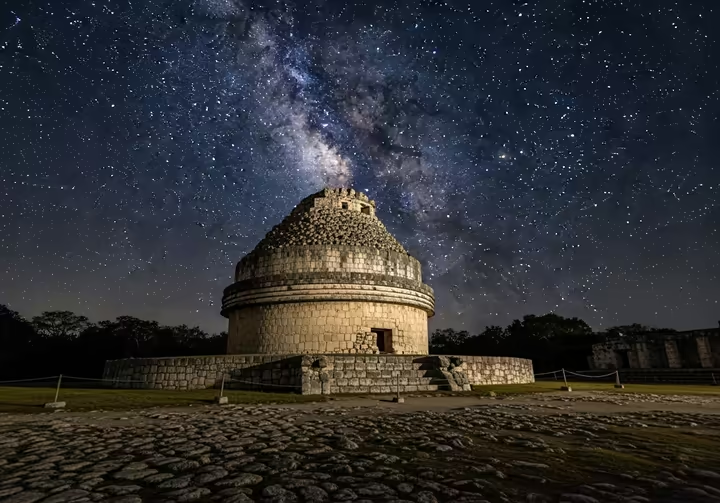
The 'Collapse' of the Mayan Civilization
So what about that "Classic Maya Collapse?" Between the 8th and 9th centuries, people just up and left the big cities in the southern lowlands. But "collapse" is a tricky word for what happened to the Mayan civilization, it makes it sound like they all vanished.
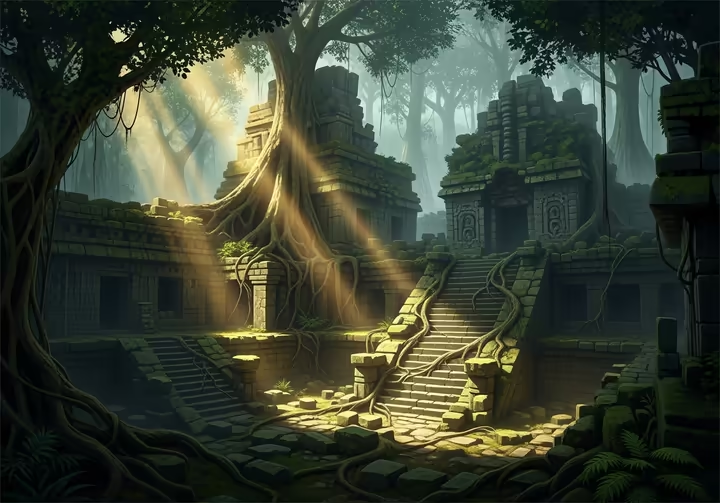
It was more of a political breakdown and a big move. While the southern cities emptied out, the Mayan civilization kept humming along in other places. So, what gives?
There was no single cause, it was a perfect storm. The city-states had been fighting for centuries, draining their resources. At the same time, large populations had led to deforestation and soil erosion.
The final straw was climate change. Scientists found evidence of a massive, long-lasting drought right around that time. For a culture that depended on rain, this was a disaster, reservoirs dried up and crops failed.
This led to a crisis of faith. The king's power came from his ability to make it rain. When the rains stopped, the kings looked useless, people lost faith in the system and just walked away. But this wasn't the end, it was a huge reshuffling as people moved north.
The Maya Today
The Mayan story didn't end when the Spanish arrived. Their culture is still very much alive. The ancient Mayan civilization isn't just in ruins, it's in the voices and lives of millions of their descendants.
Today, more than seven million Mayan people live in their ancestral homelands in Guatemala, Mexico, Belize, and beyond. They speak more than 30 different Mayan languages. Despite centuries of hardship, their culture has been incredibly tough.
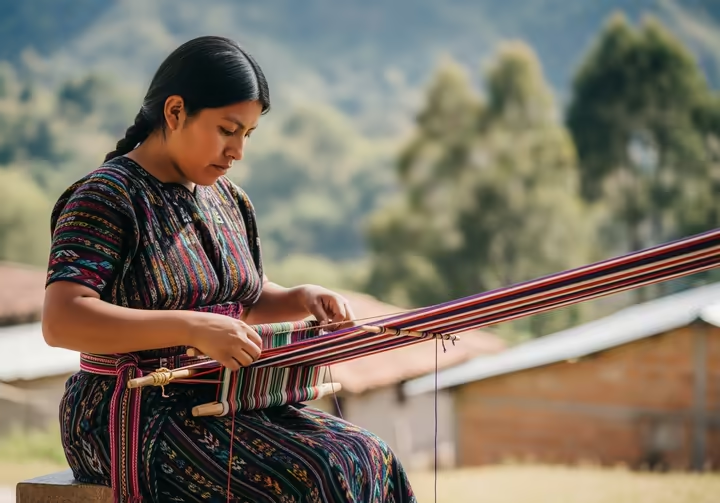
They've survived by adapting. For example, Mayan spirituality often mixes traditional beliefs with Catholicism. In many villages, women still weave traditional blouses called huipiles with designs that identify their community.
In recent years, a powerful movement to revitalize their culture has swept the Maya world. Activists are fighting for their rights and working to preserve their languages. They are the living keepers of an ancient legacy.
Mayan Civilization vs. The Aztecs
People often mix up the Mayan civilization and the Aztecs, but they were very different. They shared some cultural roots, but had their own histories and styles. Let's clear up some confusion.
Who Came First?
The Maya, by a long shot. The Mayan civilization is ancient, with roots in 2000 BCE, peaking between 250 and 900 CE. The Aztecs were latecomers, building their empire in the 14th and 15th centuries. The great Maya cities had been empty for 500 years before the Aztec Empire even existed.
One Empire?
Nope. The Mayan civilization never had a single, unified empire, they were a collection of warring city-states. The Aztecs, however, built a huge, centralized empire ruled from their capital, Tenochtitlan. They conquered other groups and forced them to pay tribute.
Art Styles
Classic Mayan art is famous for its natural, lifelike scenes that tell stories of royal life. Aztec art is more symbolic, rigid, and powerful. It focused on showing the fearsome power of the gods, not telling stories.
City Planning
Mayan cities like Tikal grew organically, fitting into the jungle landscape, so their layout can seem random. The Aztec capital, Tenochtitlan, was the total opposite. It was a masterpiece of urban planning built on a lake in a perfect grid.
Writing
This is a huge difference. The Mayan civilization had a true writing system that could express any idea in their language. Aztec writing was more of a picture-based system, good for recording dates but not for writing complex sentences.
Gods and Sacrifice
They worshipped some similar gods, for example, the Mayan rain god Chaac was like the Aztec Tlaloc. But the focus was different. Mayan religion centered on the king’s personal bloodletting rituals. The Aztec state religion was obsessed with their war god and believed he needed massive human sacrifice to keep the sun rising.